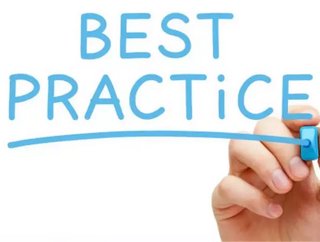Five purchasing best practices for 2014, by DigiKey

Written by Steve Vecchiarelli of DigiKey
There’s nothing quite like the fresh slate of a brand new year to make buyers think about their current practices and how they can be improved, upgraded, or even completely replaced. If you’re looking to implement one or more best practices in 2014, here are five that you’ll want to consider:
1. Introduce new KPIs into the mix. Key performance indicators, or “KPIs,” help buyers gauge just how well their procurement organizations are doing and where they should be heading in the future. “You can’t manage what you can’t measure – or what you’re not measuring,” says John Hutchinson, president and CEO at software solutions provider Vinimaya, Inc., Cincinnati. As part of an organisation’s overall mission to set, track and achieve goals, KPIs measure the most important activities and results associated with specific departments .A few of the top purchasing KPIs are quality of products and/or services (to determine if the items met your own company’s standards and those of your customers); on-time delivery (to make sure shipment expectations are met); and inventory availability (namely, whether it’s the right place at the right time and in the proper format).
2. Practice team-based procurement. By involving other organisational departments in the buying process, purchasing agents can gain valuable insights that they wouldn’t have if they were simply working in their own silos. Through a team-based approach, plant managers can quickly convey ongoing maintenance repair and operations (MRO) needs; accounting departments can discuss invoices and purchase orders; and chief executives can assess purchasing’s role in enhancing the organizational bottom line.
This approach is particularly relevant for specialised, articulate purchases, according to Bryan Jensen, vice president and principal at York, Pa.-based supply chain engineering and logistics consultancy St. Onge Company.
“The less the procurement specialist knows about the details of the equipment, the more he or she will want to get subject experts involved in the buying process,” said Jensen, who adds that three-person teams tend to be most effective in the purchasing environment. “Aim to have two subject experts and one buyer on the team. That helps avoid ‘tie’ votes (due to the odd number of team members) and keeps the process fairly simple.”
3. Build strong relationships with suppliers. “Building relationships with suppliers should be on every procurement agent’s agenda,” said Digi-Key’s Director of Supplier Marketing David Sandys. “In this day and age, time to market is a critical element supported by a firm’s ability to obtain good, stable supply from reliable vendors.”
To ensure the strongest possible supplier relationships, Sandys said buyers should pick those that possess the tools, software, reference designs, online communities and training available to support you throughout the design process. Look for partners that have a broad customer breadth and large inventory, he adds, and channel your partnering efforts into those that can support your organisation effectively throughout both the design and the supply chain cycles.
4. Go beyond price with total cost of ownership (TCO). Gartner defines TCO as a “comprehensive assessment of information technology (IT) or other costs across enterprise boundaries over time.” For IT, for example, TCO includes hardware and software acquisition, management and support, communications, end-user expenses, and the opportunity cost of downtime, training and other productivity losses.
By considering direct costs, indirect costs, transaction costs, and disposal costs, TCO gives procurement professionals a more complete picture about a specific financial investment. It also helps them compare and contrast different variables associated with a purchase and integrate concepts like sustainability into the procurement process.
Hector Lozada-Vega, associate professor of marketing at Seton Hall University’s Stillman School of Business, South Orange, N.J., expects an increasing number of companies to more closely examine the TCO of the goods and services that they’re acquiring and using in the coming years. “It’s an elusive concept for many organizations,” he points out, “but it’s a critical one for firms that want a holistic, accurate picture of their activities and performance.”
5. Save time and energy with an e-procurement system. In Save Time, Money, And Improve Supply Chain Management With E-Procurement, author Karl Schmieder defines e-procurement as a process that allows buyers and sellers to connect electronically via the Internet and through information networking systems such as electronic data interchange (EDI). E-procurement systems are available on-demand or as Software as a Service (SaaS) and can be used in every stage of the buying process, allowing agents to direct spending via purchase orders to preferred suppliers, manage catalogs from multiple vendors, and contract prices quickly and accurately with a seamless user experience.
Bill Michels, a senior vice president for the Institute of Supply Management (ISM) and president of Tempe, Ariz.-based procurement, learning and sourcing consultancy ADR North America, says buyers can use e-procurement to hold suppliers accountable (using structured templates, for example); gain more accurate supplier data and information (such as payment terms); and leverage global scenario planning through multilingual and multi-currency capabilities.
“E-procurement programs translate information and present it in a desirable, usable format,” said Michels, “thus saving buyers both time and energy.”
- The Home Depot is Enhancing CX thanks to Google CloudTechnology
- Top 10: Women in Supply Chain and Procurement in APACProcurement
- Dumarey Streamlines Suppliers with BearingPoint and JAGGAERSupplier Relationship Management (SRM)
- Explained: What is the SBTi’s Land Transport Guidance?Sustainability






